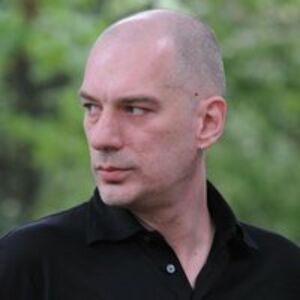He was probably the most famous Škaljarac in Yugoslav culture. Yes, it was the birthplace of one of the most colorful characters of the second half of the XNUMXth century in this area, before it became known worldwide as the headquarters of a band of robbers.
And like yes Glavurtić and on the threshold of the other world follows his passion for mystification - part of the media announced as the first news that Glavurtić died in Montenegro, in his birthplace, although he actually died in Utrecht. He, of course, smiled with satisfaction, when - in a new way, whatever it was - he saw this kind of confusion. He would try to circulate several more places of death, including Belgrade, the city he loved to the end, even though he had to flee from it at a time when that city least resembled himself. And Rome, of course, it is always considerate to die in Rome.
It's incredible what and how Glavurtić managed to be: a Catholic and an esoteric, an artist and a believer, a revolutionist and a man possessed, a pure soul and an intriguer, an anti-communist and a cosmopolitan... And all this in his own way, very personal and steady.
Glavurtić's entire life is an endlessly interesting novel: from the Art School in Herceg Novi (where he will meet Rain), of his arrival in Belgrade, where he and Kiš were preparing to go to Budapest as volunteers and fight against the communists in 1956, a famous meeting with the Devil, then the ideologue and founder of Mediala, a scandal master with white gloves, "the first hat of Belgrade" (V. Pope) - to the guru Kalajić's Vertical Belgrade from the beginning of the eighties.
Later, he defined Mediala as a resistance to "terror, banality and stupidity of modern art", and "it was also a fight against communism, we were anti-communists". After his education he was a horticultural engineer, but also a construction technician, he worked as a draftsman at the Faculty of Forestry, later he was a publisher, theologian, writer, poet. He was above all an artist - a mystifier, as if everything was a function of his layered obsessions. Art itself is mystification, Glavurtić believed, but also a search that can lead to the most unexpected places.
Montenegrin readers certainly have vivid memories of his brilliant column in the early Monitor.
You will find the most beautiful details and the most complete portrait of Glavurtić in prose, texts, records and conversations Mirko Kovača (to Arsenij Jovanovic especially, the parts about Glavurtić are hellishly interesting). He is the painter from Kovač's novel Crystal lattices, is very present in The time that recedes, as well as in the excellent 1984 book Introduction to another life. Also, he is one of the wonderful characters of Kišova Attic. His and Kish's relationship had ups and downs, but the obituary that Glavurtić wrote after Kish's death in 1989 showed the dimensions and depth of that friendship. Although it occasionally turned out to be a fierce argument and polemic that included street lines like J...e Sartre - A tebe papa. Kovač was Glavurtić's godfather and friend. Kovač obviously knew how to be a friend to both difficult and stubborn people and to understand them even when no one else wanted to.
A young leftist and filmmaker, then a student activist Želimir Žilnik in the sixties, he organized Glavurtić's exhibition in Novi Sad. The author explained in the accompanying catalog that this exhibition is an ecumenical meeting of East and West and that the Pope of Rome and the Patriarch of Vaslje will meet at its opening. When the matter was published, Žilnik was called to the committee in a panic. How come we don't know that you are planning to bring the Pope to Novi Sad? Since you did not include the Ministry of Foreign Affairs, he is also the head of a state. Žilnik tried to explain to them that such an announcement was part of Glavurtić's artistic and conceptual concept, but the not-so-convinced comrades from the committee clearly told Žilnik: "If the Pope comes to the exhibition, you will be expelled from the party."
Glavurtić obviously had a personal magic that made people willingly believe in his mystifications.
Although an ardent Catholic, Glavurtić did not feel well in Croatia. The local media mostly ignored him, the curators bypassed him, and then he, quite like Glavurtic, retaliated with the apotheosis of Belgrade. When in 2010 he was asked by the Zagreb Portal Novosti about returning to Belgrade, this is what he answered: "I don't know how... maybe under the auspices of the return of refugees (...) I would like to die in Belgrade, it would have some dignity there." I would die here as the last fukara, as the writers here say."
Glavurtić died, the myth lives on.
Bonus video:





